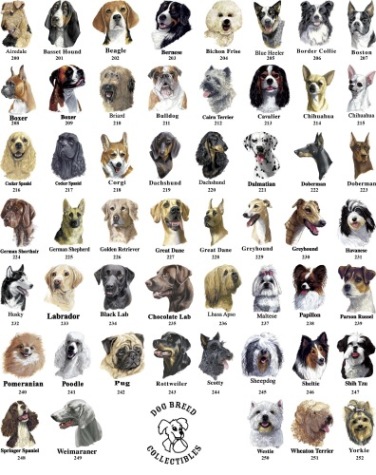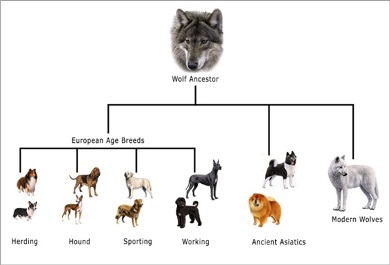Canis lupus famliliaris
Classification
For years the domestic dog was classified as a species, Canis familiaris. However, recent DNA analysis shows domestic dogs evolved from wolves, Canis lupus. This led scientists to reclassify the domestic dog as Canis lupus familiaris, a subspecies of the wolf rather than a separate species
Domain-
Eukarya
Kingdom-
Animalia
Phylum- Chordata
Subphylum-
Vertebrata
Class-
Mammalia
Order-
Carnivora
Family- Canidae
Genus- Canis
Species- Canis lupus
Subspecies- Canis lupus
familiaris

Domain Eukarya
-Organisms have cells with a true nucleus and
membrane-bound organelles.
Kingdom Animalia
-Organisms are multicellular with no cell walls
and are heterotrophs.
Phylum Chordata
-Organisms possess notochord, postanal tail and pharyngeal
pouches at some point during their life cycle. Organisms have
bilateral symmetry, segmented bodies, developed coelom, dorsal
nerve cord, closed circulatory systems, complete digestive
system and an endoskeleton.
Subphylum Vertebrata
-Organisms have a vertebral column or a backbone. They move due
to muscles attached to their endoskeletons. These organisms also
have a digestive system with large glands (pancreas and liver)
and a ventral heart with 2-4 chambers.
Class Mammalia
-Organisms
have 3 middle ear bones, hair, and produce milk from mammary
glands.
Order Carnivora
-Organisms primarily eat meat. They have 4 to 5 toes on each leg
or arm and have sharp canine teeth.
Family Canidae
-Organisms have elongated feet and legs, 5 toes on the forefeet
and 4 toes on the hindfeet, non-retractile claws, and usually
form packs with strict social hierarchy systems.
Genus Canis
-This includes wolves, coyotes, jackals and domestic dogs.
Subspecies Canis
lupus familiaris
-Canis is
the Latin word for dog. Domestic dogs are ancestors of the grey
wolf.

To learn more about a dog's habitat, click here.